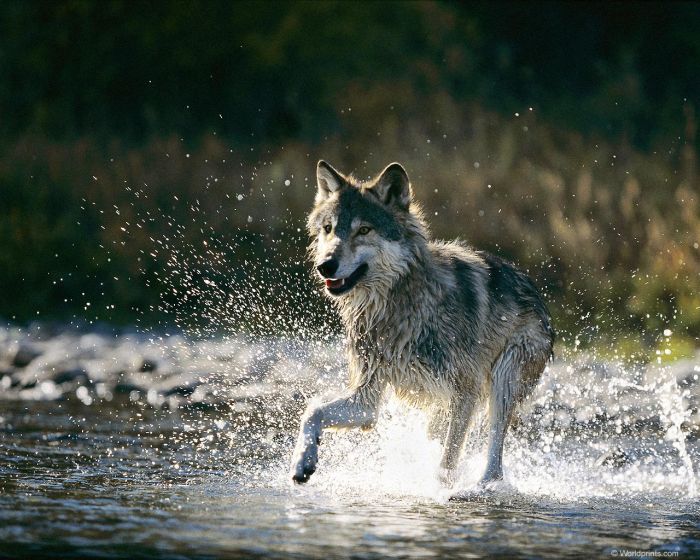|
|
Gray Wolf
|
Wolf howls are generally indistinguishable from those of large dogs. Male wolves give voice through an octave, passing to a deep bass with a stress on "O", while females produce a modulated nasal baritone with stress on "U". Pups almost never howl, while yearling wolves produce howls ending in a series of dog-like yelps. Howls used for calling pack mates to a kill are long, smooth sounds similar to the beginning of the cry of a horned owl. When pursuing prey, they emit a higher pitched howl, vibrating on two notes. When closing in on their prey, they emit a combination of a short bark and a howl. When howling together, wolves harmonize rather than chorus on the same note, thus creating the illusion of there being more wolves than there actually are. Lone wolves typically avoid howling in areas where other packs are present. Wolves do not respond to howls in rainy weather and when satiated.
• Other vocalisations
Other vocalisations of wolves are usually divided into three categories: growls, barks and whines. Barking has a fundamental frequency between 320–904 Hz, and is usually emitted by startled wolves. Wolves do not bark as loudly or continuously as dogs do, but will bark a few times and retreat from perceived danger. In captivity, wolves may learn to bark more often if they hear dogs doing so.
Growling has a fundamental frequency of 380–450 Hz, and is usually emitted during food challenges. Pups commonly growl when playing. One variation of the howl is accompanied by a high pitched whine, which precedes a lunging attack. Whining is associated with situations of anxiety, curiosity, inquiry and intimacy such as greeting, feeding pups and playing.
|
|









